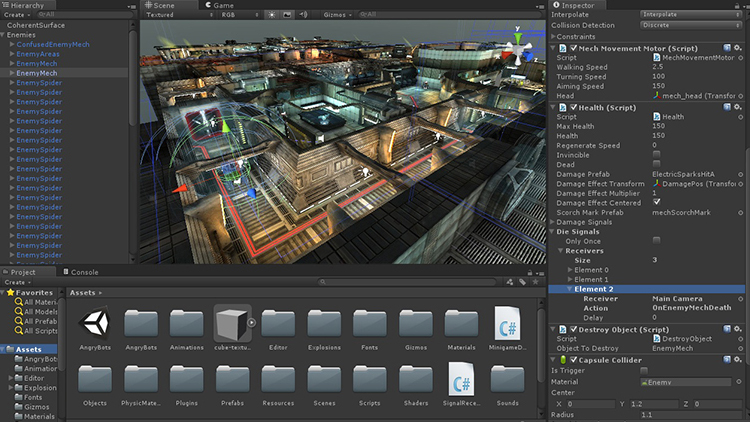Introduction to Game Design Concepts
Game design is the foundation of every successful game, encompassing mechanics, dynamics, and aesthetics that shape player experiences. In this chapter, we’ll introduce you to fundamental game design principles, including mechanics, dynamics, aesthetics, player engagement, game balance, brainstorming, and prototyping new game ideas.
Example 1: Mechanics
Mechanics are the rules and systems that govern gameplay interactions and actions. Experiment with different mechanics, such as movement, combat, puzzles, and resource management, to create engaging gameplay experiences. Analyze existing games to understand how mechanics contribute to player agency, challenge, and progression.
Example 2: Dynamics
Dynamics are the emergent behaviors and interactions that arise from mechanics during gameplay. Explore how mechanics combine and interact to create dynamic systems and player experiences. Design mechanics with emergent properties that encourage player experimentation, creativity, and strategic decision-making.
Example 3: Aesthetics
Aesthetics are the emotional and sensory experiences evoked by gameplay, visuals, sound, and narrative elements. Consider how aesthetics contribute to player immersion, atmosphere, and emotional resonance. Use art direction, sound design, storytelling, and game world-building to create compelling and memorable aesthetic experiences.
Example 4: Player Engagement
Player engagement is the level of involvement, enjoyment, and investment players experience while playing a game. Analyze player motivations, preferences, and behaviors to design mechanics and content that maximize engagement. Use feedback loops, progression systems, and rewards to maintain player interest and motivation over time.
Example 5: Game Balance
Game balance is the equilibrium between challenge and skill that ensures fair and enjoyable gameplay experiences. Balance game mechanics, difficulty curves, and progression systems to accommodate players of different skill levels and play styles. Playtest extensively to identify imbalances and adjust game parameters accordingly.
Example 6: Brainstorming New Game Ideas
Brainstorming is the creative process of generating and refining new game concepts and ideas. Organize brainstorming sessions with team members or peers to explore different themes, genres, and gameplay mechanics. Use ideation techniques like mind mapping, concept sketches, and word association to spark creativity and innovation.
Example 7: Prototyping Gameplay Concepts
Prototyping is the iterative process of building and testing early versions of game ideas to validate gameplay mechanics and concepts. Create rapid prototypes using simple tools like paper prototypes, digital mockups, or basic prototypes in Unity. Test prototypes with target players to gather feedback and iterate on gameplay ideas.
Example 8: Iterative Design and Feedback
Iterative design involves refining and improving game designs based on player feedback and testing results. Embrace an iterative design approach that encourages experimentation, iteration, and continuous improvement. Solicit feedback from players, peers, and industry professionals to identify strengths, weaknesses, and areas for enhancement.
Example 9: User Experience (UX) Design
User experience (UX) design focuses on optimizing the usability, accessibility, and enjoyment of games for players. Consider user interface (UI) design, control schemes, and accessibility features to enhance the overall user experience. Conduct usability testing and iterate on UI/UX designs to ensure intuitive and engaging interactions.
Example 10: Ethical and Inclusive Design Practices
Ethical and inclusive design practices promote diversity, accessibility, and representation in game design and development. Consider the impact of game content, themes, and mechanics on diverse player demographics. Incorporate accessibility features, such as customizable controls, subtitles, and colorblind options, to ensure all players can enjoy your game.
By applying these game design principles and examples in your game development projects, you’ll create compelling, immersive, and enjoyable experiences that resonate with players and stand the test of time. Game design is both an art and a science, requiring creativity, empathy, and iteration to craft meaningful and impactful games that leave a lasting impression on players.

Leave a Reply